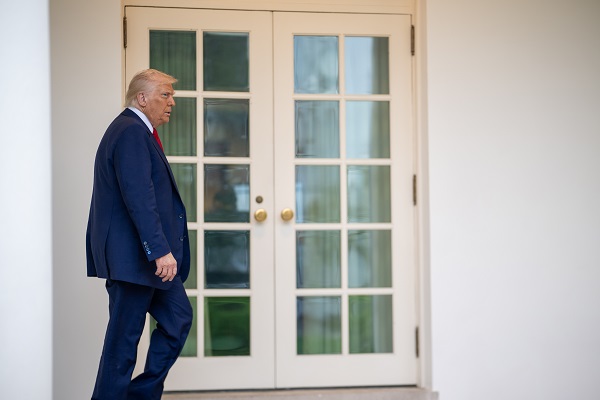Edmonton
My European Favourites – Rome, Italy
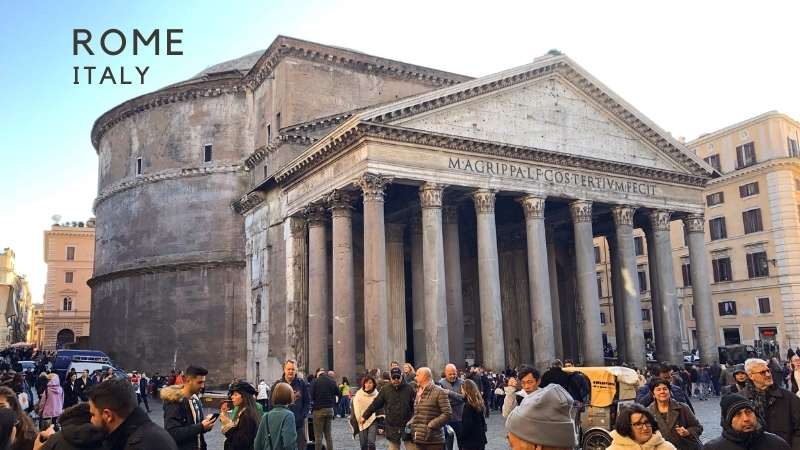

My European Favourites – Rome, Italy
Rome’s history spans three millennia and is one of Europe’s oldest occupied cities. The Eternal City was initially settled by a mix of Etruscans, Latins and Sabines. During it’s highest point, it became the capital of the Roman Kingdom, Roman Republic and Roman Empire. When Rome had a vast Empire, it gained the nickname “Caput Mundi” or “Capital of the World.”
After the fall of the Roman Empire in the west, the city came under control of the Papacy and it became the capital of the Papal States until 1870. The following year Rome became the capital of the Kingdom of Italy which, in 1946, became the Italian Republic.
With close to 3 million residents in the city proper, Rome is the third most populous city in the European Union. The city’s culture, landmarks, monuments and myths have drawn visitors from every corner of the world.
The Vatican, the centre of the Catholic Church for billions of followers, is an independent state situated inside of Rome. The Vatican’s vast square, impressive museums, Sistine chapel, and St. Peter’s Basilica require a full day of exploration.
The impressive ruins of Ancient Rome, which include Trajan’s Forums, the Roman Forum, Palatine Hill and the Colosseum are essential for any visitor of Rome. If you do a tour of Ancient Rome, be sure that you enter into the Colosseum. It’s an unforgettable experience.
We always include guided tours of the Vatican and of Ancient Rome on all of our Azorcan tours to Rome. Once we have completed those great tours, our travelers enjoy a free day in Rome to sightsee, shop and explore the city on their own. This story outlines a walk that we suggest to see some of central Rome’s great landmarks and squares at their leisure. You can find a google map of our walk at www.azorcan.net/media

Piazza del Popolo from Pincio Park, the two churches on the south and the north gate.
Piazza del Popolo
Our walk starts at the Piazza del Popolo, or the “People’s Square.” The large oval square is located inside the northern gate to the city (Porta Flaminia). Just inside the gate you should pop in to the Santa Maria del Popolo basilica to see two magnificent canvases by Caravaggio.
At the centre of the square is an Egyptian obelisk dedicated to Ramesses II. The obelisk was once located in the Circus Maximus, where Romans enjoyed chariot races. By climbing the stairs on the east side of the square, you will reach the Pincio Hill Terrace (Terrazza del Pincio) and have a great panoramic view of the square and beyond.
On the south side of the square there are two churches, the Santa Maria dei Miracoli and the Santa Maria in Montesanto. They look identical from the outside although they have different interiors. There are three main streets leading from the Piazza del Popolo. The two churches are separated by the main shopping street, the Via del Corso. The other two streets are located on either side of the churches. On the right is the Via di Ripetta and on the left is the Via del Babuino. We will leave the square on the Via del Babuino and walk for about 600 meters until we arrive at the Piazza di Spagna.

The Spanish Steps on Piazza di Spagna, the Church of Trinità dei Monti and the Boat Fountain.
Piazza di Spagna and the Spanish Steps
The Piazza di Spagna, or “Spanish Square” is named after the Palazzo di Spagna (Spanish Palace) which has been on the square since the 17th century and operates as the Spanish Embassy to the Vatican.
The center of the square has the Boat Fountain (Fontana della Barcaccia). The fountain was designed by Pietro Bernini, the father of the famous artist Gian Lorenzo Bernini, for Pope Urban VIII in 1623. The fountain features the Pope’s family (Barberini) emblem with suns and bees.
Looking up from the square is the Church of Trinità dei Monti. The famous 135 steps connecting the square to the church were built in the 18th century. The Spanish Steps are a favourite place for tourists to sit, relax and enjoy the square.
A hundred meters south from the Spanish Square is the smaller Piazza Mignanelli. The square has a 19th century Marian column named, the Column of the Immaculate Conception. The ancient Roman column is topped with a bronze statue of the Virgin Mary with a crown of 12 stars standing on a globe. The interesting column has the symbols of the evangelists on the globe and statues of Moses, David, Ezekiel and Isaiah at the base. Worth the quick stop.
From the Piazza Mignanelli, we can take the Via Frattina back to the main Via del Corso to peruse the shops until we reach the Via delle Muratte and go left to the Piazza di Trevi.

The Trevi fountain and the Neptune statue at the centre. The colorful Galleria Sciarra.
Trevi Fountain and Galleria Sciarra
The Trevi fountain is probably the most famous fountain in the world. It’s actually the end point of the only ancient Roman aqueduct that is in continuous use today, the Vergine aqueduct. Architect Nicols Savi won the design competition commissioned by Pop Clement XII in 1732 but died before it was built.
The travertine stone fountain was completed in 1762 against the Palazzo Poli (Poli Palace) with the water cascading down three rocky cliffs that are decorated with plant sculptures. The water flows down each cliff into the large, 65 foot wide, fountain basin. At the center of the fountain is the ocean god Neptune in a shell shaped chariot that is being pulled by two horses. One horse is calm and the other angry. Each horse is being guided by a triton.
Placed into the façade on either side of Neptune are a statue of a virgin girl, who legend says, showed Roman soldiers the source of the water, and a statue of Agrippa ordering the construction of the aqueduct.
Ancient Romans threw coins into fountains so that the water gods would give them a safe journey or a safe return to Rome. Today, tourists throw coins into the fountain over their shoulder to ensure a return to Rome. A second coin is for love, and a third for marriage. About 3000 Euros is collected very day from the fountain and given to a charity that provides prepaid supermarket cards for the needy.
After throwing your coins into the fountain, walk to the left on the Via delle Muratte for about 120 meters and turn left onto Via Santa Maria in Via. A block in, you will be directly in front of the Galleria Sciarra. Enter into the amazing interior courtyard with a glass and iron roof, called an arcade. The richly Art Nouveau decorated walls, in celebration of women, were painted in the late 1800s by Giuseppe Cellini using a unique painting method using pigments and Punic wax called “encaustic painting.” I like to stand in the centre of the galleria and gaze upwards, admiring the brilliant colors. The intensity and shade of the colors change depending on the time of day and the intensity of the light spilling in through the glass ceiling.
Leaving the galleria, go back to the Via delle Muratte and turn left. A block away you will cross the Via del Corso to the Via di Pietra that will take you to the Piazza di Pietra (Rock Square). Traverse the rectangular Piazza di Pietra, and staying on the left of the square, take the Via dei Pastini until you reach the Rotonda Square and the Pantheon.

The Rotonda Square and the entrance to the Pantheon. The interior of the Pantheon.
The Pantheon and the Ides of March
The Rotonda Square (Piazza della Rotonda) has a marble fountain with an obelisk at its centre. The fountain was constructed in 1575 and the Egyptian obelisk, one of 13 found throughout Rome, was added in 1711. The main attraction of the square is the magnificent Pantheon.
The Pantheon of Agrippa, or just the Pantheon, is an architectural wonder and one of the best preserved buildings from Ancient Rome. In 27 BC, Marcus Vipsanius Agrippa commissioned the building of a circular temple to “all the Roman gods.” The temple burned down, but in the early 2nd century, the Pantheon underwent a reconstruction by Hadrian. Interestingly, the inscription to Agrippa still remains on the front portico of the temple. After the fall of Rome in the mid 4th century, and attacks by barbarians, the Pantheon endured many years of neglect.
In 609 AD, the Byzantine emperor Phocas donated the building to Pope Boniface the IV. The Pope consecrated it and dedicated it as the Basilica of St. Mary and the Martyrs (Santa Maria ad Martyres). It is more commonly called Santa Maria Rotonda. As a church, it was saved from the decay and destruction that many Ancient Roman buildings suffered during the middle ages. In 1625 Pope Urban VIII, the guy with his family crest on the boat fountain at the Spanish Steps, removed many of the bronze coatings that used to be on the Pantheon’s porticos. He used the bronze to create the canopy of St. Peter in St. Peter’s Basilica and for fabrication of canons for the Sant’Angelo Castle.
In 1870, still a church, the Pantheon was turned into a memorial for famous kings of Italy and some famous artists. Amongst others, the tomb of Vittorio Emanuel II, the first King of a unified Italy, is in the Pantheon along with Italian Queen Margherita of Savoy and famous artist Raphael.
The Pantheon is most famous for its hemispherical concrete dome that is larger than the dome of St. Peter’s Basilica. The dome is supported by eight large pylons and has an 8.92 meter opening in the centre, called an oculus, that allows natural light. The 43 meter height of the building is equal to the diameter of the dome. Two thousand years after it was built, it remains the world’s largest unreinforced concrete dome.

The Pantheon’s oculus and church alter. The Elephant statue in the Piazza della Minerva.
The Ides of March
Taking the Via della Minerva on the east side of the Pantheon, you will quickly arrive at the Piazza della Minerva. The interesting statue of the Elephant carrying an obelisk is by Gian Lorenzo Bernini in 1667. The obelisk was discovered in 1665 when excavations were taking place for the building of the nearby church of Santa Maria sopra Minerva. The Egyptian obelisk was brought to Rome possibly in the 1st century for the temple that once stood there for the Egyptian goddess Isis.
We continue on the Via della Minerva until we reach the Largo di Torre Argentina on the Corso Vittorio Emanuele II. You will see Roman ruins that were unexpectedly discovered in the 1920s during the demolition of old buildings. The square contains the remains of four temples from the era of the Roman Republic in the 2nd and 3rd century BC and remains of the Theatre of Pompey that was built later in 55 BC. The curia in the Theatre of Pompey was the place where Julius Caesar was assassinated by being stabbed 23 times on the Ides of March in 44 BC. The Largo di Torre Argentina site is also famous for having quite a few cats wandering the ruins. Mice beware!
After checking out the ruins, go west long the Corso Vittorio Emanuele II for about 350 meters and go south on Via Dei Baullari until you reach the Campo de’ Fiori.

The bustling Campo de’ Fiori market and a fresh flower vendor.
Campo de’ Fiori
Campo de’ Fiori means “field of flowers’ as it was a meadow during the middle ages. Over the centuries, the Campo de’ Fiori was notorious as the place for public executions. At the centre of the rectangular square is a statue of Dominican Friar Giordano Bruno, a philosopher, mathematician and astronomer, that was burned alive for heresy at this very spot on the square in 1600. His statue, completed in 1889, looks defiantly in the direction of the Vatican, who placed his works on the “list of forbidden books.”
During the day since 1869, the Campo de’ Fiori has been a bustling market with stands selling flowers, fruit, vegetables and fish. The historic streets surrounding the square are named for various trades include Via dei Balestrari (crossbow makers), Via dei Baullari (coffer makers), Via dei Cappellari (hat makers), Via dei Chiavari (key makers) and Via dei Giubbonari (tailors).
Leaving Campo de’ Fiori, walk back to the Corso Vittorio Emanuele II where you will see the small Piazza di San Pantaleo across the street. Located at the back of the square is the Museum of Rome in the Palazzo Braschi. Take the street on the right of the palace, Via della Cuccagna, which will lead you to the Piazza Novonna.

Piazza Navona’s Church of Sant’Agnese in Agone and colorful buildings with restaurant patios.
Piazza Navona
The Piazza Navona’s elongated shape is a result of it being built on the former site of a stadium whose remains sit about six meters below the square. The Stadium of Domitian, built in 86 AD, was used for games and horse races. Some of the stadium’s ruins can be seen underneath some of the surrounding buildings.
Over many years, the Piazza Navona has been a centre for markets, festivals, races, and theatrical performances. On weekends in August from the 17th to the mid 19th century, when the square had a concave bottom, it was partially flooded to offer Romans a cool place to congregate and enjoy the summer. In recent times, a Christmas market is held annually on the square.
The Piazza Navona is dwarfed by the 17th century Church of Sant’Agnese in Agone. The church is named after St. Agnes, who was martyred in the Stadium of Domitian. The white church is situated on the west side of the square, and is one of the best examples of Baroque architecture in Rome. Located at the south end of the square, the Palazzo Pamphilj and the Church of Our Lady of the Sacred Heart are other notable buildings.

The Moor Fountain, the Fountain of the Four Rivers, and the Neptune Fountain.
The Piazza Navona has three impressive fountains. The Fontana dei Fumi (Fountain of the Four Rivers) by Bernini in 1651, located at the centre of the square, has statues representing four major rivers (Nile, Danube, Ganges, Rio de la Plata) on four continents. Above the statues, sits a copy of an Egyptian obelisk topped with the emblem of the Pope’s family, a dove carrying an olive branch.
Completed in 1575 by Giacomo della Porta, the Fontana del Moro (Moor Fountain) is located at the south end of the square. It features a Moor standing in a conch shell, wrestling a dolphin and surrounded by four tritons.
One the north side, the Fontana del Nettuno (Neptune Fountain) was originally designed by Giacomo della Porta at the same time as he designed the Moor Fountain. The initial fountain was just the basin without any statutes. In 1878, Antonio della Bitta, added the central sculpture of Neptune fighting with an octopus. A few year later, artist Gregorio Zappalà, was commissioned to add surrounding sculptures of sea nymphs, cupids and walruses.
From the Piazza Navona, you can continue north on the Via Giuseppe Zanardelli and across the River Tiber on the Ponte Umberto I (Umberto I Bridge) to the front of the massive Supreme Court building. From the bridge you will see the Castel Sant’Angelo on your left. That is our final destination on our walk.

Castel Sant’ Angelo, the bronze statue of Michael the Archangel and angel holding a cross.
Castel Sant’ Angelo
The round structure on a square pedestal wasn’t originally intended to be a castle but was built as a mausoleum for the Emperor Hadrian in 139 AD. The burial chamber at the center of the mausoleum contains an urn with the ashes of Hadrian plus those of future emperors from the Antonin and Severi families. The mausoleum was turned in to a military fortress in 401. When the fortress was besieged and sacked by the Visigoths in 410 AD, the ashes were scattered by looters. When the Goths attacked in 537 AD, the tomb statues and decorations were destroyed.
Later, in the 14th century the castle’s walls were fortified and towers were added. A secret fortified passage from Castel Sant’ Angelo to the Vatican was added to protect the papal community. The castle has also been used as a prison where many were tortured, starved and even executed in the courtyard. The Dominican Friar Giordano Bruno, who was burnt to death in the Campo de’ Fiori, was a prisoner here for six years.
Since 1753, the Castel Sant’ Angelo has been topped by a bronze statue of Michael the Archangel sheathing his sword. The Castel Sant’ Angelo bridge has ten angel statues holding up instruments of the passion of Christ including a pillar, whips, a crown of thorns, Veronica’s veil, his garment and dice, nails, the cross, the superscription INRI, the sponge and the lance.
The Castel Sant’ Angelo is located in the Parco Adriano (Hadrian’s Park) and is now a museum that is visited by more than a million people each year.
Let’s Go To Rome
Rome is full of historic buildings, squares and ruins. There are places we could have easily added during our walk, but just as “Rome was not built in a day,” it is also true that “Rome can not be seen in a day.” I included the most interesting and significant stops in Rome’s Centro Storico.
In the evening, I suggest going to the medieval Trastevere neighborhood located just south of Campo de Fiori by crossing the River Tiber at the Pont Sisto. Partake in the evening walk or promenade (passeggiata) while checking out the artisan shops. After working up an appetite, there is no shortage of trattorias, restaurants, beer pubs and bars to enjoy “la dolce vita” late into the night.
Explore Europe With Us
Azorcan Global Sport, School and Sightseeing Tours have taken thousands to Europe on their custom group tours since 1994. Visit azorcan.net to see all our custom tour possibilities for your group of 26 or more. Individuals can join our “open” signature sport, sightseeing and sport fan tours including our popular Canada hockey fan tours to the World Juniors. At azorcan.net/media you can read our newsletters, listen to our podcasts and view maps related tour all of our ‘My European Favourites” stories.
Images compliments of Paul Almeida and Azorcan Tours.
Read more of Paul’s stories on Todayville by clicking here.
Alberta
Edmonton Murder Shows Trudeau Has Lost Control Of Crime
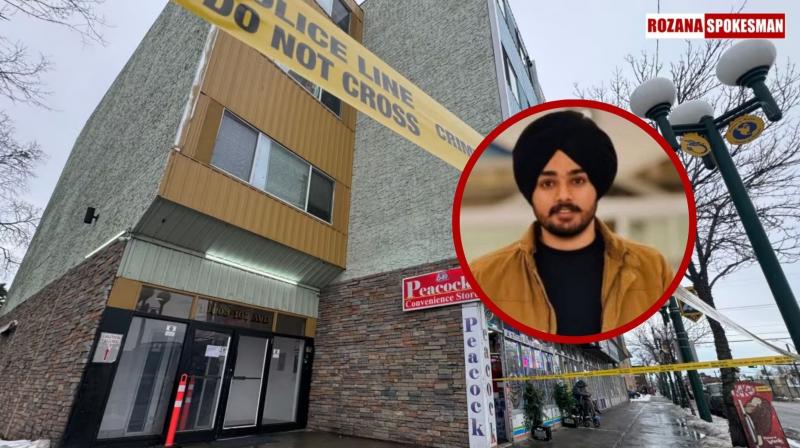
Harshanedeep Singh from rozanaspokesman.com
News release from the Conservative Party of Canada
After nine years, the NDP-Liberal government has lost control of crime. Violent crime has skyrocketed by 50 percent since Trudeau became Prime Minister and 256 people were killed by a criminal who was out on bail or another form of release in 2022, the latest year available with full data.
On Saturday, Canadians witnessed the shocking, heinous murder of Harshandeep Singh, a 20-year-old security guard in Edmonton, Alberta. Singh was shot in the back while thanklessly doing his job as a nighttime security guard at a central Edmonton apartment building. A promising young life was snuffed out by a cold-blooded monster.
“One cannot imagine how Harshandeep’s family and friends feel,” said Tim Uppal, Deputy Leader of the Conservative Party of Canada. “Our thoughts and prayers go out to his family at this incredibly difficult time.”
Edmonton Police have since arrested two individuals and charged them with first degree murder: “Evan Rain, 30, and Judith Saulteaux, 30, were arrested and charged with 1st degree murder in relation to Singh’s death.”
Early indications suggest that Rain has a known prior violent history, with media reports aligning with Rain’s current age. In 2018, an “Evan Chase Francis Rain”, then age 24, was charged for a violent kidnapping in Wetaskiwin, one hour south of Edmonton. A woman was forced into the trunk of a car at gunpoint. It is not clear from media reports how this case was concluded.
In 2022, “Evan Rain, 28, of Paul First Nation” (45 minutes west of Edmonton) faced twenty-nine charges for a violent robbery in northern Saskatchewan involving firearms.
This is from the 2022 RCMP news release at the time:
Evan Rain, 28, of Paul First Nation, is charged with:
-one count, robbery, Section 344, Criminal Code;
-one count, have face masked with intent to commit an indictable offence, Section 351(2), Criminal Code;
-eight counts, possess a firearm knowing it was obtained by the commission of an offence, Section 96(2), Criminal Code;
-one count, possession of property obtained by the commission of an offence, Section 354(1)(a), Criminal Code;
-one count, mischief under $5,000, Section 430(4), Criminal Code;
-sixteen counts, possess a firearm while prohibited, Section 117-01(3), Criminal Code; and
-one count, point a firearm, Section 87(2), Criminal Code.
The status of these charges is not readily apparent. The RCMP’s 2022 news release does make clear that Rain was already prohibited from possessing firearms: “sixteen counts, possess a firearm while prohibited, Section 117-01(3).”
“It appears that our so-called ‘justice’ system terribly failed Harshandeep Singh – just as it has outrageously failed so many others,” said Uppal. “Harshandeep Singh’s murder cannot be accepted as just an unfortunate, unavoidable reality in our society. Authorities should answer to Rain’s prior police interactions and potential criminal history, including whether he was out on bail or some other form of release order.”
Life wasn’t like this before Justin Trudeau. Since the NDP-Liberal government passed Bill C-75 and Bill C-5, which gave high priority to releasing repeat violent offenders and took away mandatory jail time for certain violent crimes, a crime wave has been unleashed across the country. This was evident in a report from the Fraser Institute which showed that Canada’s violent crime rate is 14 percent higher than that of the United States’.
Trudeau’s only response to this has been to crack down on law-abiding firearms owners and Indigenous hunters which has done nothing to improve Canada’s public safety. Instead, violent gun crime is up by a staggering 116 percent since the Liberals formed government.
Enough is Enough. Canadians deserve to feel safe in their communities. Only Common Sense Conservatives will bring home safe streets by ending Justin Trudeau’s catch-and-release justice system and bringing jail, not bail, for repeat violent offenders.
Alberta
Multi-million dollar drug seizure in southwest Edmonton
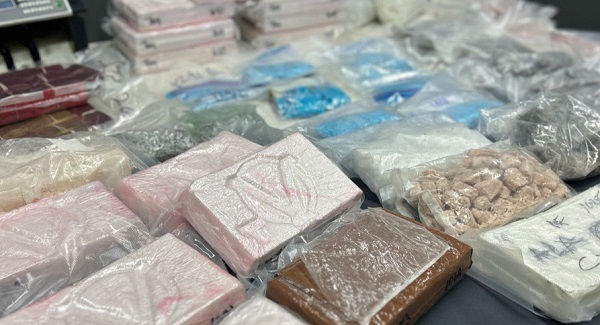
News release from ALERT (The Alberta Law Enforcement Response Team)
Nearly $2.5 million in drugs and cash was seized from a southwest Edmonton condo building. A warrant has been issued for an Edmonton man.
ALERT Edmonton’s organized crime team made the seizure on October 9, 2024 after searching an address in the Windermere neighbourhood. The Edmonton Police Service helped with the search warrant execution.
ALERT seized an estimated $2.3 million worth of drugs, which included:
- 17.7 kilograms of cocaine;
- 5.3 kilograms of MDMA;
- 950 grams of methamphetamine;
- 3.1 kilograms of ketamine;
- 5 kilograms of psilocybin mushrooms;
- 20,000 oxycodone pills;
- 4,705 illicit prescription pills;
- $41,000 cash.
ALERT searched the address following an investigation that dates back to June 2024. Investigators developed information about a high-level drug trafficker operating in the Edmonton area with a number of supply lines.
The drug seizure marks ALERT’s largest since a record bust earlier in the year. In August, 27 kilograms of cocaine were seized from a west Edmonton home. The two investigations are unrelated.
A warrant has been issued for the arrest of Minh Nguyen. The 36-year-old Edmonton man is wanted on charges of possession of drugs for the purpose of trafficking, possession of proceeds of crime, and possession of counterfeit money.
Anyone with information on his whereabouts is asked to contact police.
The investigation began in June 2024 after ALERT received information about a drug supplier based in the Edmonton area. ALERT alleges Nguyen was supplying other drug dealers in Edmonton and northern Alberta communities.
Members of the public who suspect drug or gang activity in their community can call local police, or contact Crime Stoppers at 1-800-222-TIPS (8477). Crime Stoppers is always anonymous.
ALERT was established and is funded by the Alberta Government and is a compilation of the province’s most sophisticated law enforcement resources committed to tackling serious and organized crime.
-

 Also Interesting2 days ago
Also Interesting2 days agoMortgage Mayhem: How Rising Interest Rates Are Squeezing Alberta Homeowners
-

 2025 Federal Election2 days ago
2025 Federal Election2 days agoConservative Party urges investigation into Carney plan to spend $1 billion on heat pumps
-

 2025 Federal Election2 days ago
2025 Federal Election2 days agoCommunist China helped boost Mark Carney’s image on social media, election watchdog reports
-

 2025 Federal Election2 days ago
2025 Federal Election2 days agoFifty Shades of Mark Carney
-

 2025 Federal Election2 days ago
2025 Federal Election2 days agoCorporate Media Isn’t Reporting on Foreign Interference—It’s Covering for It
-

 Business1 day ago
Business1 day agoStocks soar after Trump suspends tariffs
-

 Justice2 days ago
Justice2 days agoCanadian government sued for forcing women to share spaces with ‘transgender’ male prisoners
-
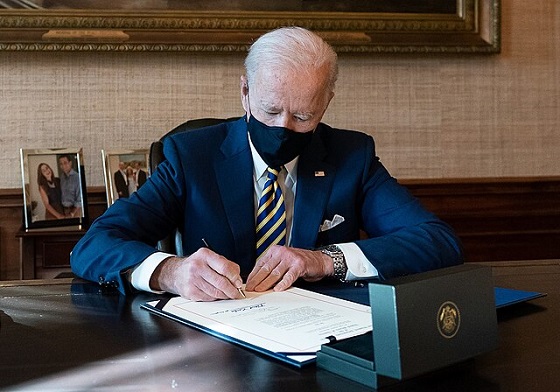
 COVID-191 day ago
COVID-191 day agoBiden Admin concealed report on earliest COVID cases from 2019



